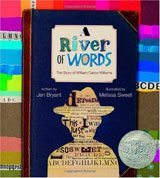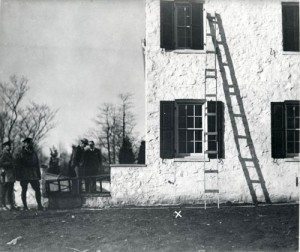by Jen Bryant
I’ve always had an ambivalent relationship with the word “inspiration.” On the one hand, I acknowledge the illusive, inexplicable aspect of the writing process that I can’t control, when the lines, paragraphs, pages seem to flow from somewhere outside of myself, knitting together almost seamlessly. On the other hand (and this is the much, much heavier hand) I believe that good writing — like all good art — comes from conscious effort, commitment, and lots of trial and error. In this way, writing a poem or a novel is much like anything else we do: making a home-cooked meal, building a go-cart, or shaping a backyard garden. You begin with a vision, but then you must roll up your sleeves, kneel down and set to work.
“But how do you know where to start?!” I hear this question at nearly every writing workshop I conduct, regardless of the age or experience of the students. My standard answer is always the same: “Well, I don’t KNOW where to start … but I start anyway. I start at the place where my heart is thumping the loudest, the part that is almost pure emotion.” Usually, it’s not pretty. I might scribble down some phrases, a question, or even a few lines of rough poetry that focus on one or two images. It never looks like much. I set that aside and go do something else (work on my garden or my grocery list.)
 Later, I come back to that first scribble and read it over a few times. If it’s the beginning of a biography for which I’ve done considerable research, I shuffle through my notes and choose a few facts about the subject that I find particularly interesting or unusual. For example, when I began writing A River of Words: The Story of William Carlos Williams, I honed in on young Willie’s love of wandering through the fields around his hometown, his sense of physical connection to his surroundings, and his easy relationship to solitude. Later, as an adult, these would be instrumental in his success as a poet. As I worked through the many drafts of the narrative, the image of the river became the thread that connected his childhood to his adulthood, his child’s play to his man’s work.
Later, I come back to that first scribble and read it over a few times. If it’s the beginning of a biography for which I’ve done considerable research, I shuffle through my notes and choose a few facts about the subject that I find particularly interesting or unusual. For example, when I began writing A River of Words: The Story of William Carlos Williams, I honed in on young Willie’s love of wandering through the fields around his hometown, his sense of physical connection to his surroundings, and his easy relationship to solitude. Later, as an adult, these would be instrumental in his success as a poet. As I worked through the many drafts of the narrative, the image of the river became the thread that connected his childhood to his adulthood, his child’s play to his man’s work.

If it’s a novel with some real/historical underpinnings, I focus on an image that I can flesh out into a rough poem. In The Trial, for example, I began with the image of the ladder — the object that became the most important piece of evidence against immigrant carpenter Bruno Richard Hauptmann, the man accused of kidnapping the Lindbergh baby. So how, you ask, did that ladder make MY heart thump, when I wasn’t even alive in 1935, the year the trial took place? Well … I grew up just a few blocks from the famous Flemington courthouse, and our house was next to that of my paternal grandmother, who remembered that trial from her own childhood. She used to tell me stories about that time, and those stories sometimes haunted me at night, when I would imagine a stranger placing a wooden ladder against OUR house, climbing up to my bedroom window, and snatching me from my room. (See?– thump, thump, thump!)
The part of “inspiration” that you CAN control is your commitment to try. Sit down, pick a phrase or an image that has some emotional resonance for you, and start with that. If the first one doesn’t lead you forward — try another one. And another. And another, if necessary. Do this often enough, and you will have the first bricks laid on a path that will lead you through the rest of your book.

Thank you for some helpful advice! I really love your account of why you started with the ladder … going back to your grandmother’s stories, no wonder your heart was thumping!